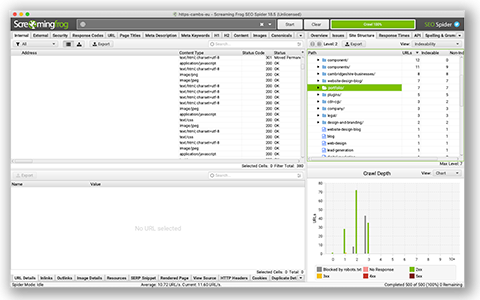How Do I Do a Website Audit?
What is a Website Audit
A website audit is a comprehensive analysis and report of your website's design, content, and technical setup.
The audit is aimed at giving website managers, developers and SEO teams a report which offers insight into the general health of the website. The scope of an audit is important to define because it can quickly spiral into a very large complex report* which becomes hard to digest and analyse. For this reason, a limited audit can be more useful in the beginning. It should still cover the main key areas we will show shortly.
The end goal is to improve a website's overall performance for users and also appearance and ranking in SERPS** also known as search engine optimization (SEO).
If Google doesn't rate any pages on your website a good Audit will quickly show you why that is. If you don't show for your brand then you really have a serious problem which could also include a manual penalty in rare situations.
Here are the steps to perform a basic website audit:
1. Start with a crawl of your website
Use a website crawling tool such as Screaming Frog, Sitebulb or Lumar (formerly Deep Crawl). Google of course already crawls your website (GSC* and Bing WMT*) so utilise any reports from these to setup more detailed sub investigations. An example of issues which can be seen quickly are broken links, poor site architecture and missing meta tags. Technical issues are likely to show up through crawls as design considerations are bypassed.
2. Analyze your website design
Evaluate your website's overall design, including its layout, visual appeal, and user experience. Look for areas where you can improve the site's usability, such as reducing load times or making it easier to navigate. You can assess your main pages for user experience by going here and inputting your page urls to test.
3. Review your content
Check your website's content for accuracy, relevance, and value to your target audience. Consider the readability and tone of your content, as well as the use of keywords and meta descriptions. Some content may be dated and in need of a refresh. Don't fall in the trap of just making more and more content. This isn't a good strategy unless you are a huge brand with big resources.
4. Analyze your website's technical setup
Examine your website's technical setup, including its hosting, CMS, and server configurations. Make sure your website is secure and that it meets the latest web standards. An in-depth technical assessment can include more than 80 individual checks, but there are short cuts for simpler websites and many of the checks are not as critical as others.
5. Evaluate your website's SEO performance
Check your website's search engine optimization performance, including its visibility in search results, keyword rankings, and backlinks. Use free tools like Google Analytics and Google Search Console to gather data about your site's performance. If you want more intel you can use paid tools such as AHREFS and SEMRUSH.
Next Steps
Create a plan for improvement AKA a ROAD MAP!
Based on your findings, create a plan to improve your website's performance, including fixing any technical issues, improving the design and content, and optimizing your site for search engines.
*A full website audit can include around 80 points to check.
** SERPS Search Engine Results Page
Website Audit Services
Calvin Crane SEO Audit and SEO Consultancy Location Cambridgeshire
Related Posts
Comments
By accepting you will be accessing a service provided by a third-party external to https://cambs.eu/




